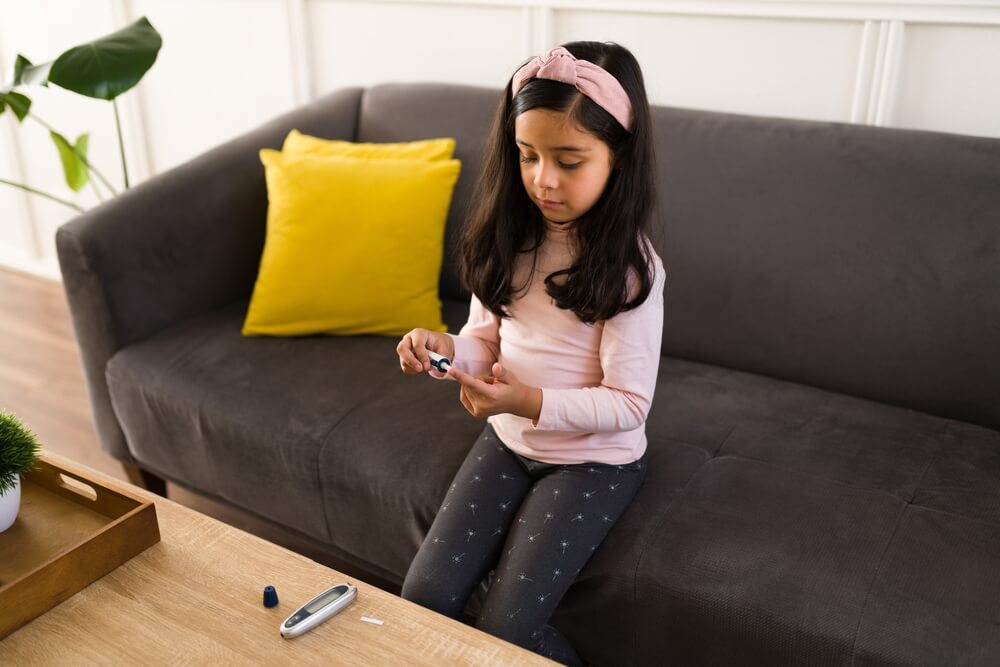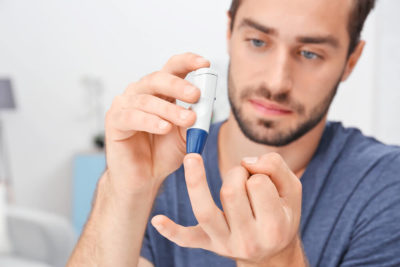Childhood diabetes is very common in the United States, but what are the differences between type 1 vs. type 2 diabetes? Which diabetes is worse? When you are searching for a diagnosis, it’s important to educate yourself about type 1 and type 2 diabetes symptoms in children and what diabetes treatment your child will need throughout their life to stay happy and healthy. Here is what every parent should know about the differences between type 1 and type 2 diabetes.
What Is the Difference Between Type 1 vs. Type 2 Diabetes?
When you consider type 1 vs. type 2 diabetes, there are many similarities, like the treatment process and the importance of maintaining a healthy lifestyle. However, there is also a difference between type 1 and type 2 diabetes. Type 1 diabetes is not impacted by any lifestyle factors and is not more or less likely to occur if you are overweight or eating an unhealthy diet. Most children with diabetes have type 1.
While type 2 diabetes symptoms in children are often similar, there is a difference between type 1 and type 2 diabetes. Family history of diabetes, age, weight, and lifestyle all influence your level of risk. Unlike type 1, you can prevent type 2 by maintaining a healthy weight, staying active, and eating a balanced diet. Those over 40 are most likely to be diagnosed with type 2 diabetes, but stil, there are children being diagnosed with it every year.
Another difference between type 1 vs. type 2 diabetes is what happens in the body. Children with type 1 diabetes have an immune reaction that destroys the cells in the pancreas that are responsible for making insulin. Their bodies do not produce any as a result. When the body does not have insulin, blood sugar will rise. To replace the insulin that their bodies cannot make, insulin will need to be administered to reverse type 1 diabetes symptoms in children.
What Are Type 1 Diabetes Symptoms in Children?

Type 1 diabetes symptoms in children are similar to type 2 diabetes symptoms. Some of the most common type 1 and type 2 diabetes symptoms in children include:
- Blurry vision
- Cuts that don’t heal properly or normally
- Persistent fatigue
- Hunger
- Feeling thirsty and needing to drink a lot
- Urinating frequently and urgently
When it comes to which diabetes is worse for children, type 2 is often more severe in terms of symptoms.
What Are Type 2 Diabetes Symptoms in Children?
On top of the type 1 diabetes symptoms in children, there is some symptomatic difference between type 1 and type 2 diabetes. Unintended weight loss is sometimes one of the type 2 diabetes symptoms in children. Additionally, neuropathy is common for type 2 diabetes. This is numbness in the extremities (typically the hands and feet). One other difference between type 2 and type 1 diabetes symptoms in children is darkened skin in the armpits or around the neck.
Which Diabetes Is Worse?
If your child has received a diabetes diagnosis, your first concern might be which diabetes is worse. Type 1 and type 2 diabetes are both serious conditions that require professional medical care. However, there can be a great variation in the severity of the disease from type 1 vs. type 2 diabetes and child to child. For this reason, there is no guarantee that type 1 or type 2 diabetes will be better or worse for any person.
However, type two diabetes can be more dangerous. First, when you consider which diabetes is worse, consider that type 1 diabetes is often diagnosed in children and young adults so that proper care can be provided. However, type 2 diabetes can go undiagnosed for many years and is often diagnosed in adults. Another difference between type 1 and type 2 diabetes is that with type 2 diabetes, your pancreas produces enough insulin, but your cells cannot use it to make glucose into energy efficiently. This leads to blood sugar problems that can be dangerous.
How Is Diabetes Diagnosed?
Your child’s doctor will perform testing to diagnose them with diabetes. Some of the most common tests to determine type 1 versus type 2 diabetes include:
- Fasting blood sugar test that examines blood sugar levels after fasting for at least 8-12 hours
- A1C tests that look at the range of values their blood sugar was over a two-to-three-month period
- Glucose tolerance tests that gauge how your child’s body reacts to a very sweet liquid rich in glucose
In some cases, more than one test might be performed to confirm the diagnosis.
How Is Diabetes Treated?
The treatment for your child’s diabetes will depend on whether they have type 1 or type 2. Type 1 diabetes is often diagnosed earlier in life and cannot be cured. Instead, it can be managed through healthy lifestyle choices and insulin. Depending on the severity of the condition, children and adults with type 1 diabetes can use an insulin pump or manual injections to maintain stable blood sugar levels.
Type 2 diabetes is treated in a similar fashion to type 1 diabetes, as a combination of a healthy lifestyle and medication can reduce symptoms and even potentially stabilize blood sugar. Those with type 2 diabetes may take medication to improve blood sugar or other symptoms. All doctors recommend that those with type 2 diabetes pay special attention to eating a balanced diet, maintaining a healthy weight, and getting enough exercise.
Is There Any Way to Prevent Diabetes?

There is no way to prevent type 1 diabetes, but there are ways to avoid getting type 2 diabetes. Because weight, diet, and physical activity are major contributors to diabetes risk, making lifestyle changes can help lower yours. The best way to help your child avoid type 2 diabetes is:
- Maintaining a healthy weight
- Following a healthy, balanced diet filled with fruit, vegetables, and whole grains
- Exercising regularly
- Working with your doctor and health provider
Are You Concerned That Your Child Has Type 1 or Type 2 Diabetes? Call the Pediatric Endocrine and Metabolic Center of Florida Today
Type 1 and type 2 diabetes are both serious medical conditions that require ongoing care to ensure that your child can have the happiest and healthiest life possible. At the Pediatric Endocrine and Metabolic Center of Florida, we can serve as a valuable resource for you and your family. Whether you need testing to determine if your child has type 1 or type 2 diabetes or want to explore how to reduce their risk, our doctors are here to help.
We know that being diagnosed with diabetes can be scary and overwhelming, which is why we can help ease your burden however we can. At the Pediatric Endocrine and Metabolic Center of Florida, we have a diverse care team of professionals who can connect you with any interventions or therapies that your child requires. If you are ready to schedule an appointment for a diagnosis or treatment or learn more, contact us today by calling (772) 834-7362 or using the button above to request an appointment.


